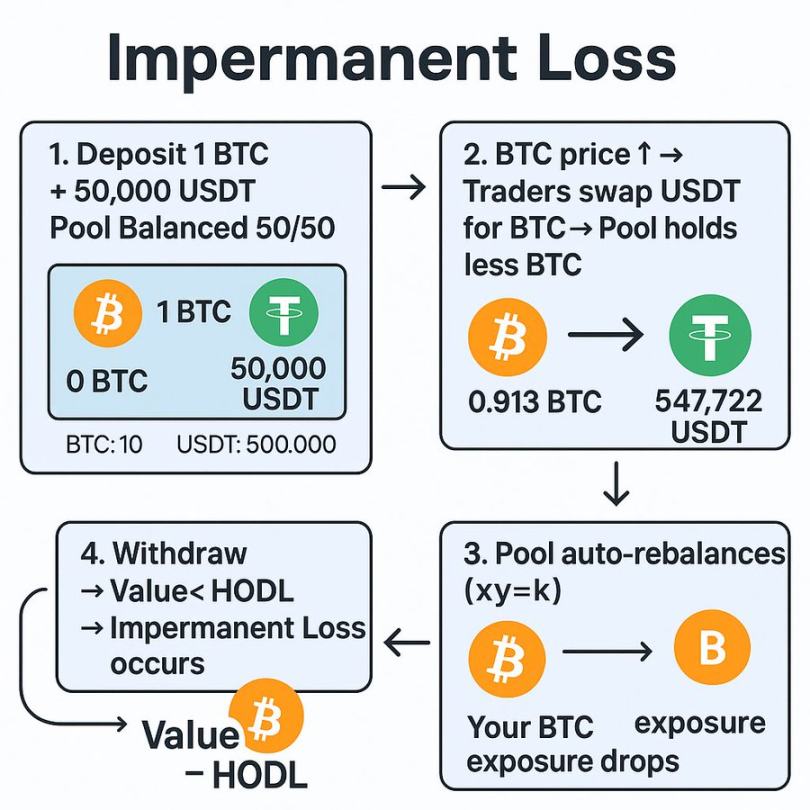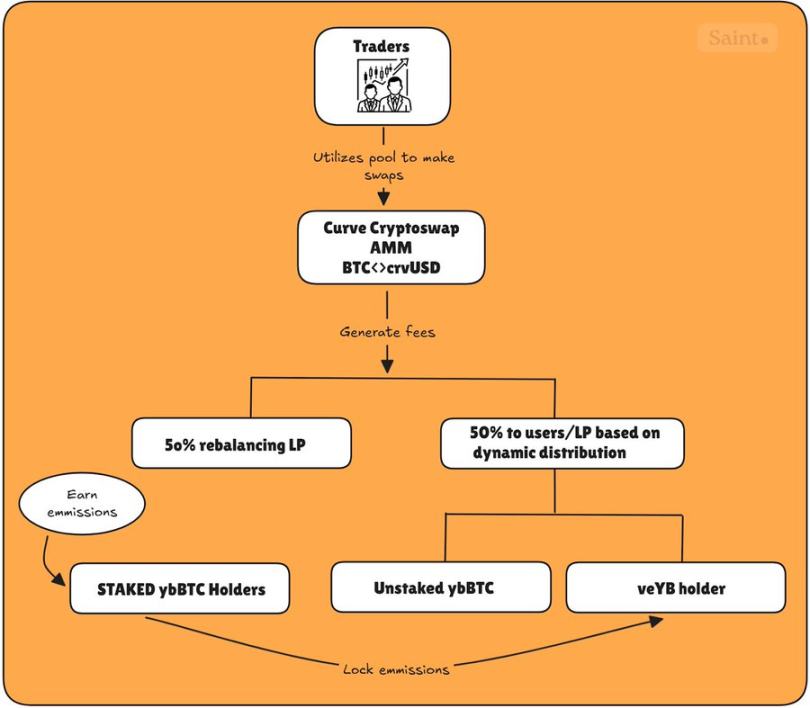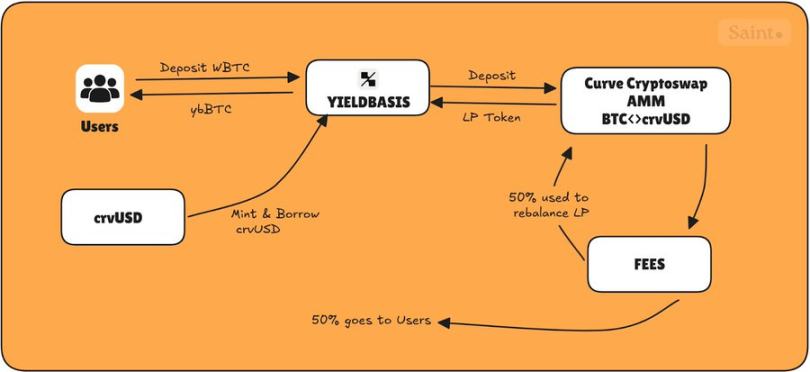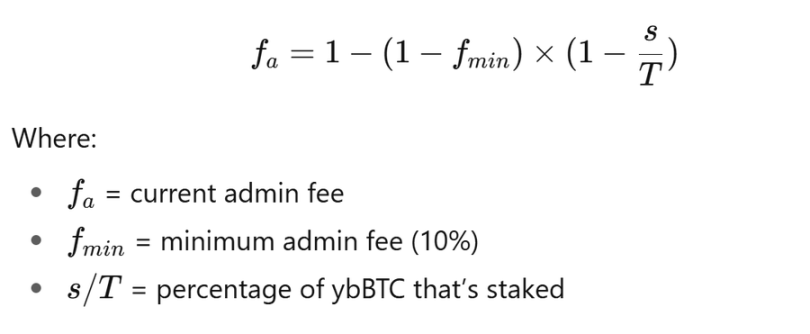If this model can scale safely, it may open up a whole new frontier of returns for DeFi liquidity providers.
Written by: Saint
Compiled by: AididiaoJP, Foresight News
Every so often, a blockbuster DeFi product emerges in the crypto market.
Pumpfun makes token issuance easy, while Kaito changes content distribution.
Now, YieldBasis aims to redefine how liquidity providers profit: by converting volatility into returns and eliminating impermanent loss.
In this article, we will explore the fundamentals, analyze how YieldBasis works, and highlight relevant investment opportunities.
Overview
If you have ever provided liquidity to a dual-asset pool, you may have experienced impermanent loss firsthand.
But for those unfamiliar with the concept, a quick recap:
Impermanent loss is a temporary loss of value that occurs when providing liquidity to a pool containing two assets.
As users trade between these assets, the pool automatically rebalances, which often results in liquidity providers holding more of the asset that has been sold.
For example, in a BTC/USDT pool, if the price of BTC rises, traders will sell BTC to the pool for profit, and liquidity providers will ultimately hold more USDT and less BTC.
When withdrawing funds, the total value of the position is usually lower than simply holding BTC.

Back in 2021, high annual percentage yields and liquidity incentives were enough to offset this.
But as DeFi matures, impermanent loss has become a real drawback.
Various protocols have introduced fixes, such as concentrated liquidity, delta-neutral liquidity providers, and one-sided pools, but each method has its own trade-offs.
YieldBasis adopts a new approach aimed at making liquidity provision profitable again by capturing returns from volatility while completely eliminating impermanent loss.
What is YieldBasis?
In simple terms, YieldBasis is a platform built on Curve that generates returns from price fluctuations using Curve pools while protecting liquidity provider positions from impermanent loss.
At launch, Bitcoin is the primary asset. Users deposit BTC into YieldBasis, which allocates it to Curve's BTC pool and applies leverage through a unique on-chain structure to neutralize impermanent loss.
Founded by the same team behind Curve, including @newmichwill.
YieldBasis has already achieved significant milestones:
• Raised over $50 million from top founders and investors
• Recorded over $150 million in committed amounts during the Legion sale
• Filled its BTC pool within minutes of launch
So, how does this mechanism actually work?
Understanding the YieldBasis Workflow

YieldBasis operates through a three-step process designed to maintain a 2x leveraged position while protecting liquidity providers from downside risk.
Deposit
The first step for users is to deposit BTC into YieldBasis to mint ybBTC, a receipt token representing their share in the pool. Currently supported assets include cbBTC, tBTC, and WBTC.
Flash Loan and Leverage Setup
The protocol flash loans an amount of crvUSD equal to the dollar value of the deposited BTC.
BTC and the borrowed crvUSD are paired and provided as liquidity to the BTC/crvUSD Curve pool.
The resulting LP tokens are used as collateral to deposit into a Curve CDP (Collateralized Debt Position) to obtain another crvUSD loan to repay the flash loan, fully leveraging the position.
This creates a 2x leveraged position with a constant 50% debt ratio.
Leverage Rebalancing
As the price of BTC fluctuates, the system automatically rebalances to maintain a 50% debt-to-equity ratio:
If BTC rises: LP value increases → Protocol borrows more crvUSD → Risk exposure resets to 2x
If BTC falls: LP value decreases → Redeem some LP → Repay debt → Ratio returns to 50%
This keeps BTC risk exposure constant, so you do not lose BTC even with price fluctuations.
Rebalancing is handled through two key components: the Rebalancing Automated Market Maker and the Virtual Pool.
The Rebalancing Automated Market Maker tracks LP tokens and crvUSD debt, adjusting prices to encourage arbitrageurs to restore balance.
Meanwhile, the Virtual Pool wraps all steps of flash loans, LP token minting/destroying, and CDP repayments into a single atomic transaction.
This mechanism prevents liquidation events by maintaining stable leverage while providing small profit incentives for arbitrageurs to maintain equilibrium.
The result is a self-balancing system that continuously hedges against impermanent loss.
Fees and Token Distribution

YieldBasis has four main tokens that define its incentive system:
ybBTC: Claim on 2x leveraged BTC/crvUSD LP
Staked ybBTC: Staked version earning token emissions
YB: Native protocol token
veYB: Voting-locked YB, granting governance rights and enhanced rewards
All transaction fees generated from the BTC/crvUSD pool are shared:
50% goes to users (shared between unstaked ybBTC and veYB holders)
50% returns to the protocol to fund the rebalancing mechanism
The 50% returned to the rebalancing pool ensures that there will be no liquidation calls due to a lack of arbitrageurs to balance the pool; thus, the protocol uses 50% of the protocol fees to complete this itself.
The remaining 50% allocated to users is shared between unstaked ybBTC and veYB governance, following a dynamic distribution.
In short, the protocol tracks the amount of staked ybBTC and adjusts the fees each holder (unstaked ybBTC and veYB) can earn using the following formula:

When no one is staked (s = 0)
Thus, 𝑓ₐ = 𝑓𝑚𝑖𝑛 = 10%, veYB holders receive only a small portion (10%), while unstaked ybBTC holders receive the remaining (90%).
When everyone is staked (s = T)
Thus, 𝑓ₐ = 100%, veYB holders receive all user-side fees since no one is left to earn trading fees.
When half of the supply is staked (s = 0.5T), the management fee rises (≈ 36.4%), with veYB receiving 36.4% and unstaked holders sharing 63.6%.
For staked ybBTC holders, they receive YB emissions, which can be locked as veYB for a minimum of 1 week and a maximum of 4 years.
Staked ybBTC holders can lock their received emissions to enjoy both fees and emissions as veYB holders, creating a flywheel effect that allows them to earn maximum fees from the protocol, as shown in the diagram below.
Since its launch, YieldBasis has had some interesting statistics:
Total trading volume reached $28.9 million
Over $6 million used for rebalancing
Generated over $200,000 in fees.
Personal Thoughts
YieldBasis represents one of the most innovative designs in liquidity provision since the original stable swap model of Curve.
It combines proven mechanisms; voting-escrowed token economics, automated rebalancing, and leveraged liquidity provision, into a new framework that could set the next standard for capital-efficient yield strategies.
Given that it is built by the same team behind Curve, the market's optimism is not surprising. With over $50 million in funding and the pool filling instantly, investors are clearly betting on the future of its token issuance.
That said, the product is still in its early stages. The relatively stable nature of BTC makes it an ideal test asset, but introducing highly volatile trading pairs too early could challenge the rebalancing mechanism.
That being said, the fundamentals look solid, and if this model can scale safely, it may open up a whole new frontier of returns for DeFi liquidity providers.
免责声明:本文章仅代表作者个人观点,不代表本平台的立场和观点。本文章仅供信息分享,不构成对任何人的任何投资建议。用户与作者之间的任何争议,与本平台无关。如网页中刊载的文章或图片涉及侵权,请提供相关的权利证明和身份证明发送邮件到support@aicoin.com,本平台相关工作人员将会进行核查。



